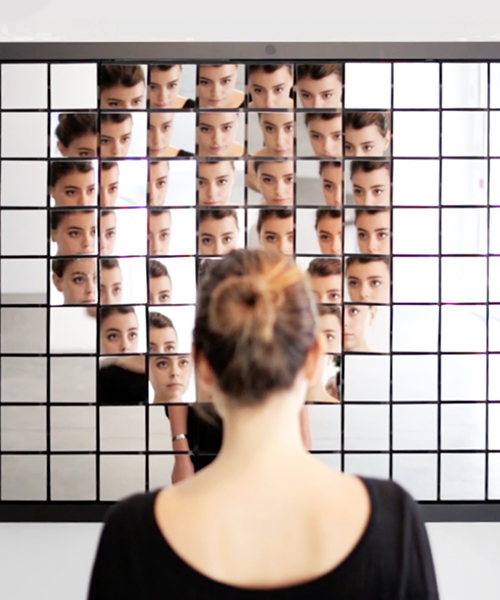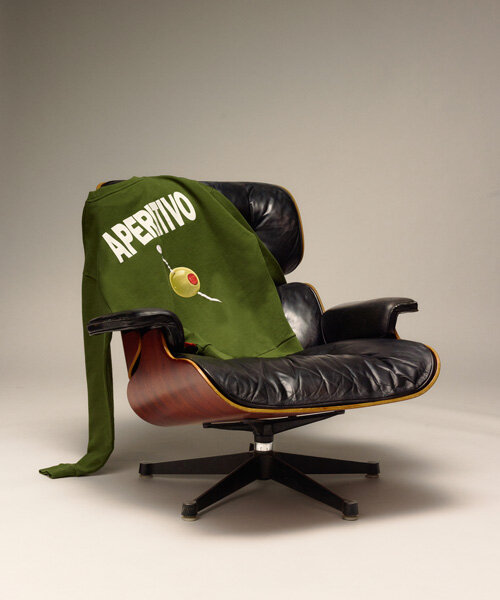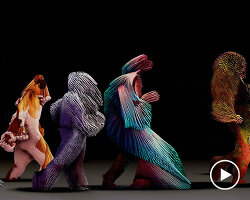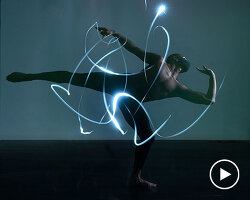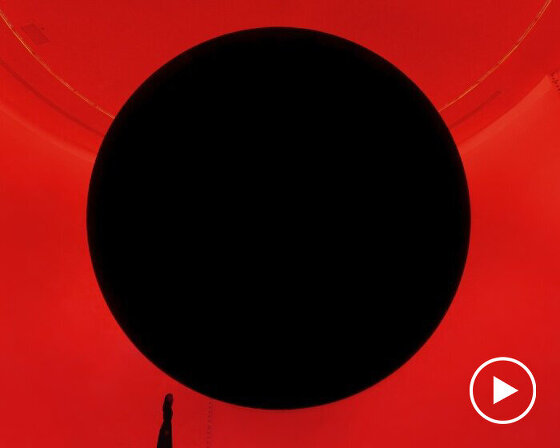random international is a collaborative contemporary art studio whose work questions identity and autonomy in the post-digital age. with teams in london and berlin, the studio conceives both large and small scale installations, sculptures and mixed media that invite active audience participation and study the relationship between humans and machines.
at the end of september, random international opened a solo exhibition of works at pace gallery in new york that investigate how we perceive and process visual information — particularly in relationship to the body and our own reflection. from now through october 22, 2016, ‘on the body’ offers a tangible manifestation of human and mechanized relationships through a range of visual, material and technological methods.

fragments, 2016
stainless steel mirrors, aluminium, high density fibre board, motors, camera, computer
39-7/8″ x 88-1/2″ x 5-3/4″ (101.3 cm 224.8 cm x 14.6 cm)
designboom spoke with random international founders hannes koch and florian ortkrass about their approach to new projects, their solo show at pace gallery in new york, and the emerging technologies that most excite them.
designboom (DB): what is your approach to creating new work, and how do you navigate projects that are more technologically difficult to achieve?
hannes koch and florian ortkrass (HK + FO): projects develop in different ways: through conversation, through making something and discussing it, through personal interest, through site visits, through context. we often have a clear idea of why something should exist in the world and how it should be if it were possible. this usually gives us enough guidance in the development and choice of materials, processes etc.
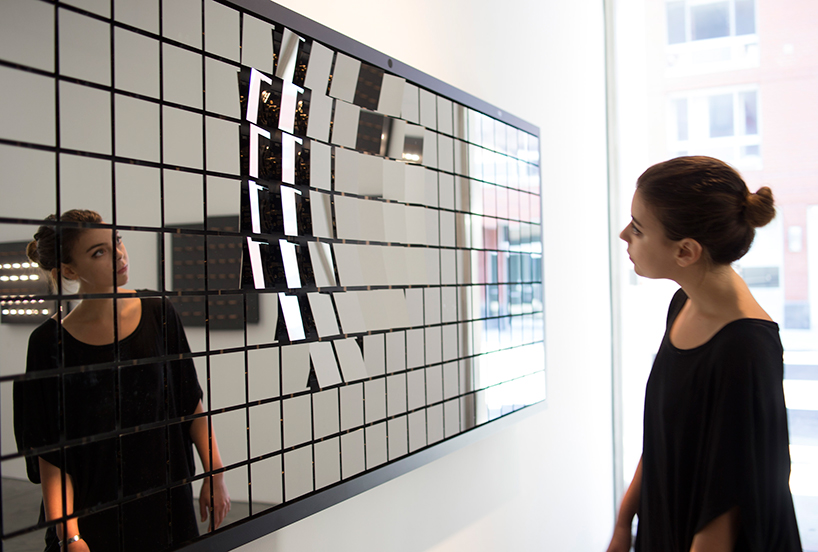
installation view of ‘fragments’ at pace gallery in new york
DB: does every project necessarily start out as a collaborative one? is that an essential component, or does the collaborative aspect happen naturally?
HK + FO: not all projects start out from the same place and we’re not dogmatic about this either, no. we tend to listen to each other, and to argue with each other, and to discuss some more. once the two of us are aligned and we bring the work into the studio it experiences a whole other level of distillation, both conceptually and technically. this process of opening up and taking ourselves back in some way in order to make work better is quite essential to our practice, and by now it happens naturally.
‘fragments’
video courtesy of random international
DB: how did the work of biomotion lab act as a catalyst for the sculpture ‘fifteen points’?
HK + FO: professor niko troje’s work was just that — a bit of research that we were intrigued by for the best part of 5 years. it was only when we did our residency at harvard with le laboratoire that we got into the idea of actually bringing that which fascinated us — the precision and grace of human movement when reduced to only fifteen points, the minimum of necessary information — into the physical realm.
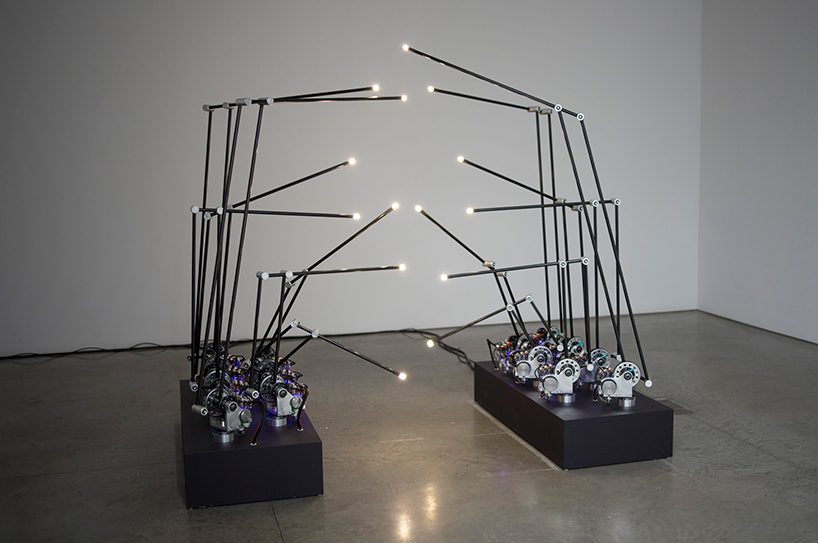
fifteen points / I, 2016
motors, custom driver electronics, custom software, aluminium, carbon fibre, LEDs, custom rail system, computer
2000 mm x 3000 x 8000 mm
image © random international 2016 / photograph courtesy pace gallery
DB: what did you learn about the ways in which humans identify ‘natural’ movement?
HK + FO: apparently, we humans are pretty good at distinguishing mechanical movement from biological motion. it’s hardwired into our brain to read and process the visual clues that tell us something is alive within a split second (it might eat us!). so we contacted professor troje last autumn, and showed him what we’ve been up to over the last year (we started two years ago), and the more we speak to him, the more it feels like we’ve only just gotten started. with ‘on the body’ in new york, we found that while there is so much we have learned, there is still so much more that we want to learn about with this work!
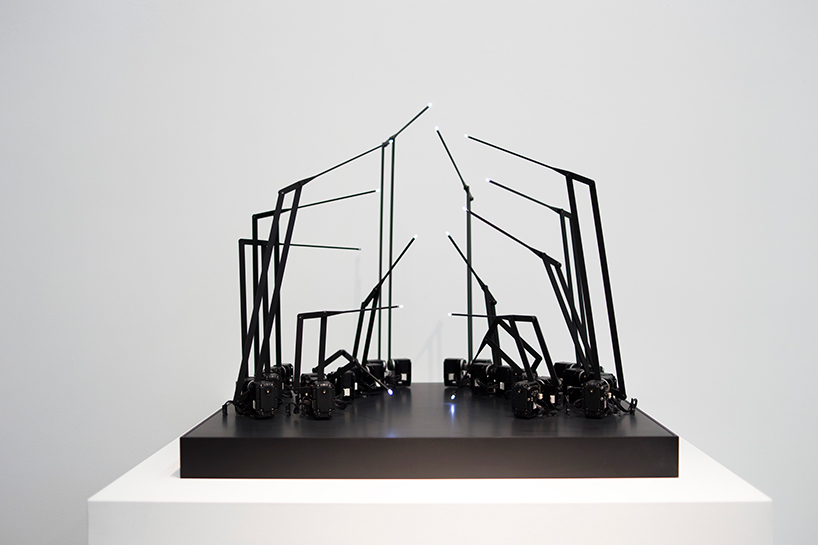
study for fifteen points / I, 2016 motors, custom driver electronics, custom software, aluminium, LEDs, computer
22″ x 28″ x 21-3/4″ (55.9 cm x 71.1 cm x 55.2 cm), sculpture 31-7/8″ x 30″ (81 cm x 76.2 cm), plinth
image © random international 2016 / photograph courtesy pace gallery
DB: as ‘blur mirror’ explores global extremes of data transparency, how present a consideration is social media in your artistic process, and how much does it effect your work once it has been produced?
HK + FO: both of us are sort of ‘actively by-standing’ when looking at the entire idea of ‘social media’— in a way, we’re indigenous people of a thorougly pre-digital world. proudly 80’s! when we grew up, the future was still very analogue. so we’re using social media, but more as a pastime…once work is out there and published, social media can be an incredible catalyst (like seeing more than 5000 comments on ‘study for fifteen points’ on reddit, or ‘rain room’ becoming the most instagrammed art work for a bit back in 2013). in that sense, our work sometimes takes on its own life and we just sit back and enjoy, for the most part.
study for fifteen points / I
video courtesy of random international
DB: how do you hope viewers engage with the installations at pace gallery? what is the intended reaction to the works?
HK + FO: I don’t think we really pre-empt or intend a reaction. this body of work is an expression of how we see the world and how we think it sees us…it really is up to people to decide how to engage with it. if anything, I think we’re interested in the actual physicality of our relationship with the machine world.
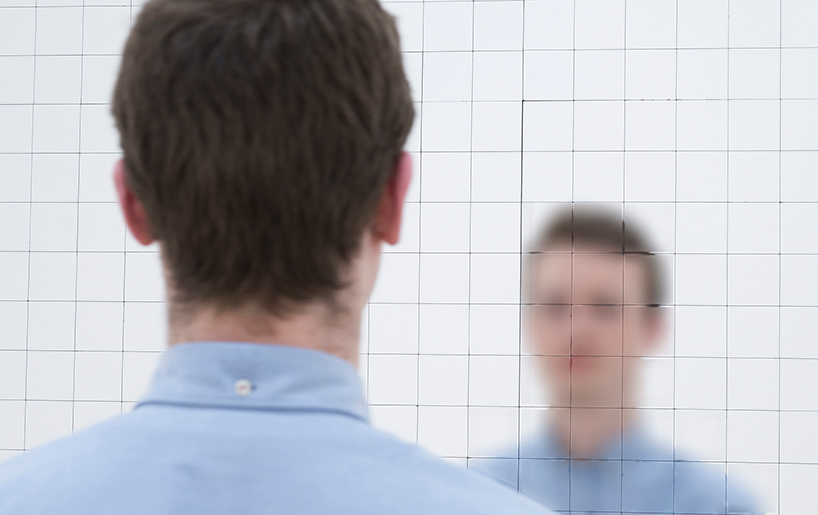
blur mirror, 2016
mirror, custom mounts, motors, custom motion tracking software, camera, computer | 123mm x 456mm x 789mm
photo by damian griffiths, courtesy pace london
DB: as your work is grounded in technology and the digital, are there any new technologies or future technologies that you find particularly exciting?
HK + FO: we get most excited about new ways of making our work — tools and processes that make our work easier to make excite us! photography and film equipment…so exciting! most recently: 6 axis motorised steadi-cam pack. so awesome!
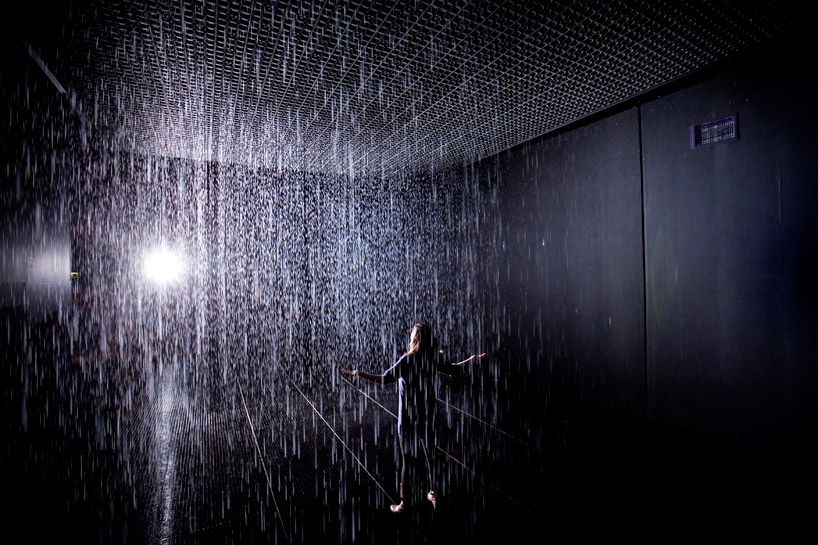
‘rain room’ at barbican: 2,500 liters of water is filtered, treated and recycled | image © felix clay
see more about the project on designboom here
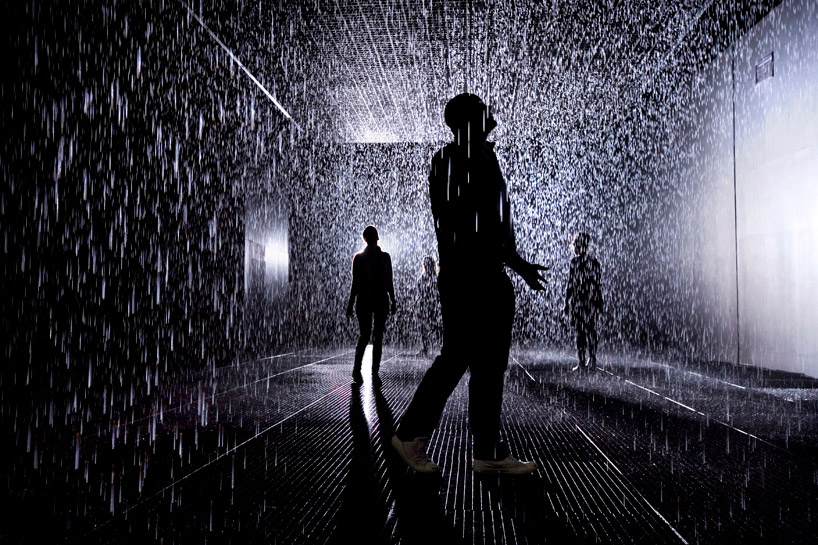
participants experiencing the sound of rain, without getting wet | image © felix clay

‘swarm study / IX’ (2016) inhabits the facade of the hauptbahnhof chemnitz in germany
photo by jan bitter
swarm study / IX
video courtesy of random international
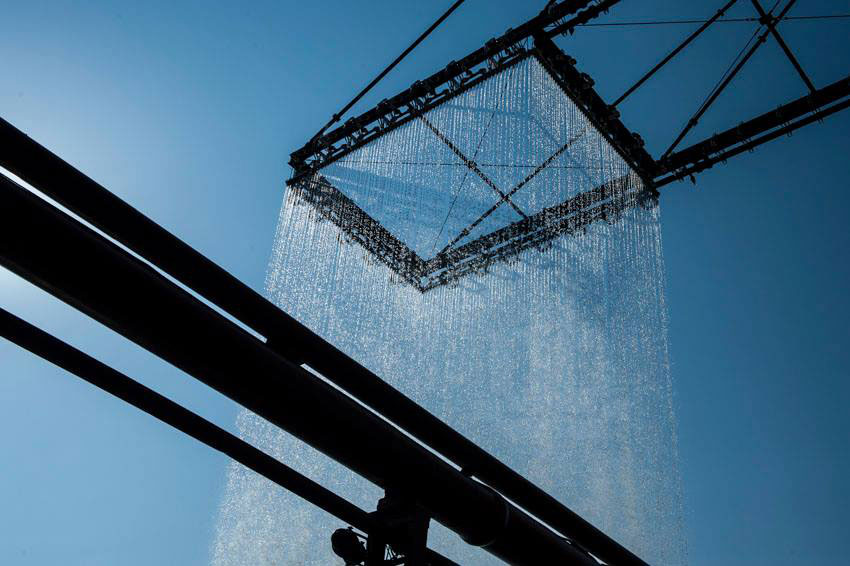
‘tower: instant structure for schacht XII’, 2013 | photo by thorsten arendt / courtesy of urbane künste ruhr
see more about the project on designboom here
tower: instant structure for schacht XII, 2013
video courtesy of random international
